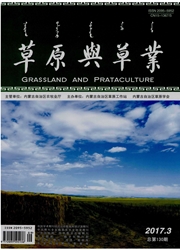

 中文摘要:
中文摘要:
本文采用有重复双因素试验设计,探讨地下现存量对不同放牧制度的响应特点及其随土层深度的变化规律;结合回归模型,建立荒漠草原群落地下现存量变化规律的拟合和预测函数,为荒漠草原放牧管理及退化生态系统的恢复重建提供理论指导和基础依据。研究发现,地下现存量主要集中于土壤表层(0-40cm),并随深度增加而急剧减少,且不同放牧制度对地下现存量的影响仅限于0-40cm土层内(P〈0.05);在总地下现存量方面,轮牧(824g/m^3)明显高于自由放牧(551g/m^3)和围封禁牧(520g/m^3)(P〈0.05)。根据设计构建的统一预测模型,能够得到的地下总现存量能够反映实际测得现存量90%以上的信息,为研究不同放牧制度间对地下现存量的影响差异及其随土层深度的变化规律提供理论依据,也为草原管理和草地可持续利用提供理论指导。
 英文摘要:
英文摘要:
The paper took a repeated two-factor experimental design to explore the response characteristics and its variation of different grazing system and soil depth on underground biomass. Combined with regression model, it established fitting and forecasting functions of community underground biomass variation so as to pro- vide a theoretical guidance and basis for the management of degraded desert grassland and restoration of grazing e- cosystem. The results showed that underground biomass mainly concentrated in the surface layer (0 - 40 cm), and sharply decreased with increased soil depth, the effects of different grazing systems on underground biomass limited within 0 - 40 cm soil layers (P〈0.05). The total underground biomass in rotational grazing area (824 g/m^3) was significantly higher than that in continuous grazing (551 g/m^3) and enclosed grazing (520 g/m^3) (P 0.05). According to the prediction model design, the total biomass can get more than 90% of the information for actual measured underground biomass, which provides a theoretical basis to impact of differences among different grazing systems on underground biomass and its variation with soil depth, and also provide theoretical guidance for grassland management and sustainable grassland utilization.
 同期刊论文项目
同期刊论文项目
 同项目期刊论文
同项目期刊论文
 期刊信息
期刊信息
